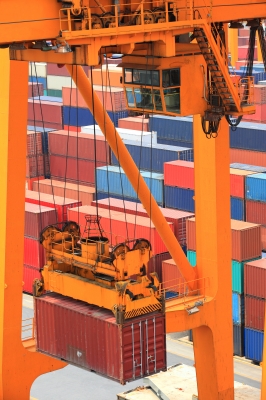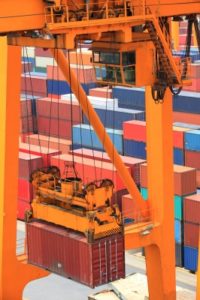The Philippine Ports Authority (PPA) is proposing a simple and standard formula for computing port and cargo-handling rates in a bid to ease and reduce the cost of doing business on the waterfront.
The new formula proposed seeks to comply with the standing directive from the Office of the President and Department of Transportation “to look into the ease of doing business” and “try to come up with a reasonable cost of doing business,” PPA Commercial Services Department manager Emma Suzara said during the Luzon chapter of a public consultation on tariff rate adjustment held on August 7.
Suzara is also chair of the Port Pricing Review Committee (PPRC), which was created under PPA Special Order No. 370-2017 to study and recommend the methodology for determining the appropriateness and reasonableness of port tariff adjustment, among others.
Supervising financial specialist Catherine Esto, in a presentation during the public consultation, said that under the existing formula and methodology for computing rate adjustments for port dues—dockage at berth fees, dockage at anchorage fees, lay up fees, storage, and wharfage—it usually takes five years for adjustment recommendations to be approved.
For cargo-handling charges such as arrastre, stevedoring, and other related charges, the existing formula is based on PPA Memorandum Circular (MC) No. 22-89, wherein the percentage increase in labor cost is multiplied by the percentage share in total cost to get the rate adjustment. Through the years, the PPA Board had added three more economic factors—power, fuel, and repairs and maintenance—which were believed to have the most economic impact on cargo-handling operations.
With this current formula, Esto said port operators asking for a cargo-handling rate adjustment are required to submit several documentary requirements such as audited financial statements and certified true and correct matrix of operating expenses.
Submission of such documents and validating their authenticity and reliability usually takes six months to two years, Esto said.
For other fees such as pilotage, vessel traffic management service fees, ancillary service and permit fees, and line handling fees, the consumer price index (CPI) is usually the reference for rate adjustment.
The PPRC is recommending adopting a uniform and standard formula for rate adjustments based on CPI—a statistical measure of the average retail pricing of goods and services commonly purchased by particular group of people in a particular area. CPI is computed and provided by the Philippine Statistics Authority.
For port charges and other port fees that are uniformly applied nationwide, the proposed formula is CPI “for all items Philippines.” This will be computed by the existing tariff multiplied by the quotient of the new CPI over the old CPI.
For cargo-handling charges and other port fees that are by port, the formula is the same, except that the CPI to be used will be the “all items per region.”
Esto said the use of CPI is recommended by the PPRC because it is simple, is a standard reference data, and needs no validation of numerous financial and operational documents. It is also the most objective, as the applicant won’t have to submit documents to the ports authority as all data will be coming from a third source.
Additionally, it provides real-time or immediate assessment of the port tariff adjustment in a given period, and no public hearing will have to be conducted for every request for adjustment.
Suzara said that in PPRC’s evaluation, the CPI “came out to be most advantageous for all sectors.”
Adjustments can also be upward or downward, depending on the CPI.
Bien Basco, who represented the Philippine Cargo-Handling and Arrastre Service Operators and the Port Users Confederation, expressed support for using CPI in rate adjustment. He asked, however, about the frequency of the adjustment under the proposal, and the base year for its implementation.
Suzara responded that they would have to evaluate and analyze the frequency and base year from the position papers and recommendations to be submitted by stakeholders. PPA gave stakeholders 15 calendar days to submit their position papers.
PPA will be issuing a separate proposal on the method for implementing the formula.
Suzara said, however, that for existing contracts, such as those with Manila South Harbor, Manila North Harbor, and Manila International Container Terminal, the frequency indicated in their contracts will be respected.
Suzara also noted that PPRC is recommendatory with the final decision resting with the PPA Board.
Asked why PPA is doing away with public consultation, Suzara said it is usually time consuming and costly.
She added that PPA also sought legal opinion on the new formula and the answer was “this is acceptable.” – Roumina Pablo
Image courtesy of potowizard at FreeDigitalPhotos.net






